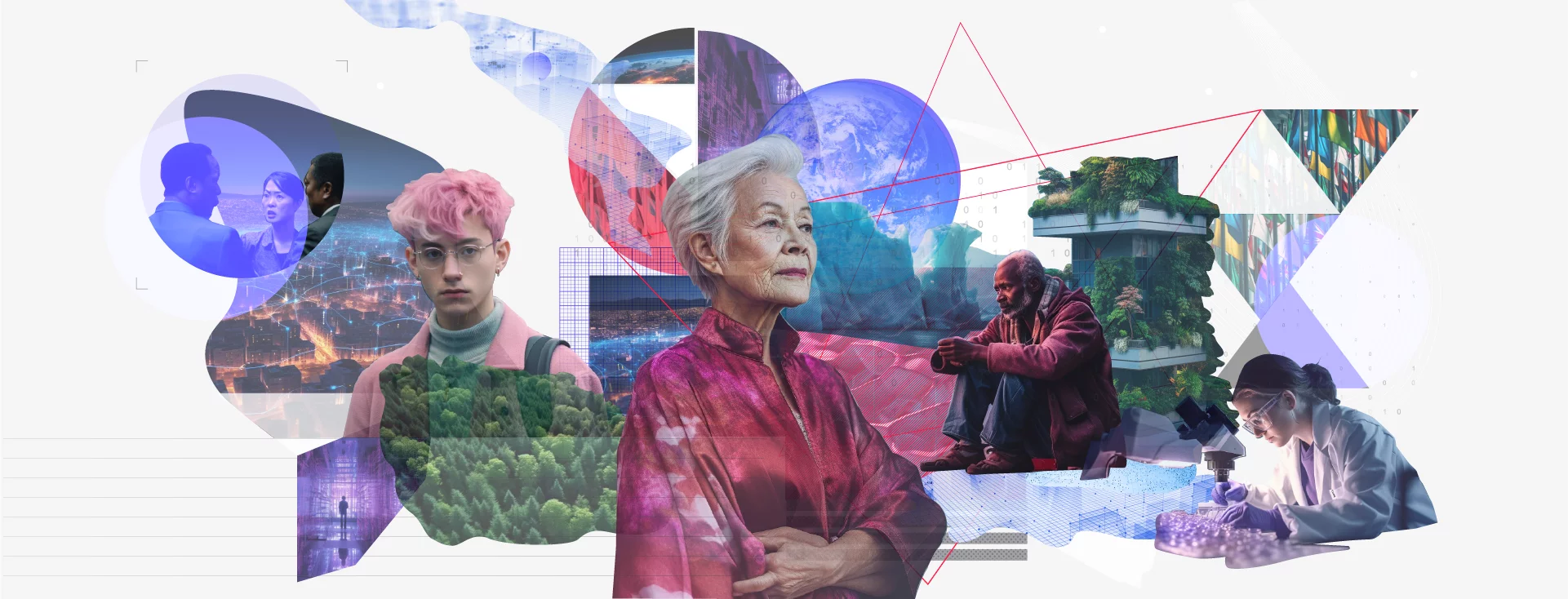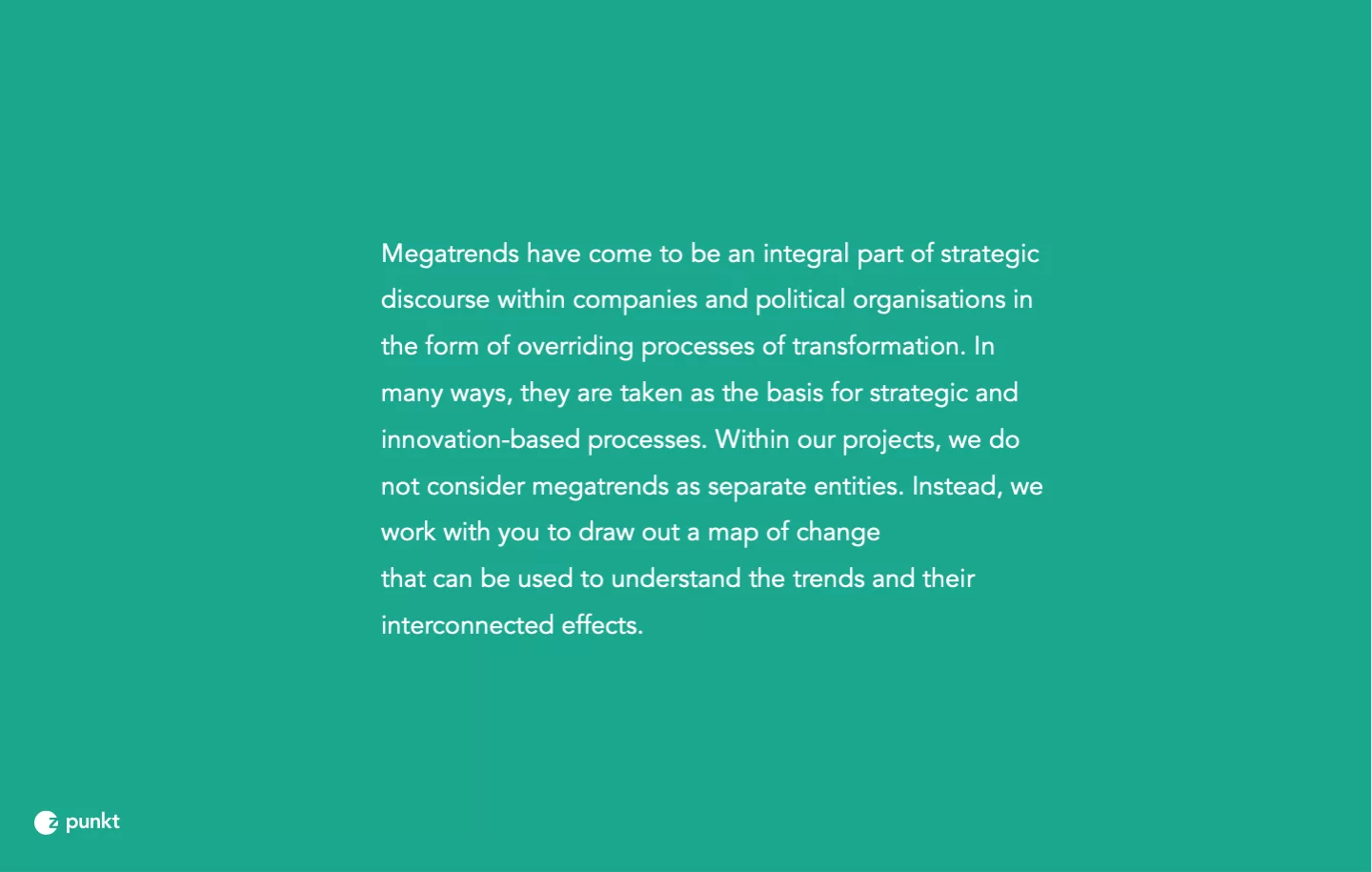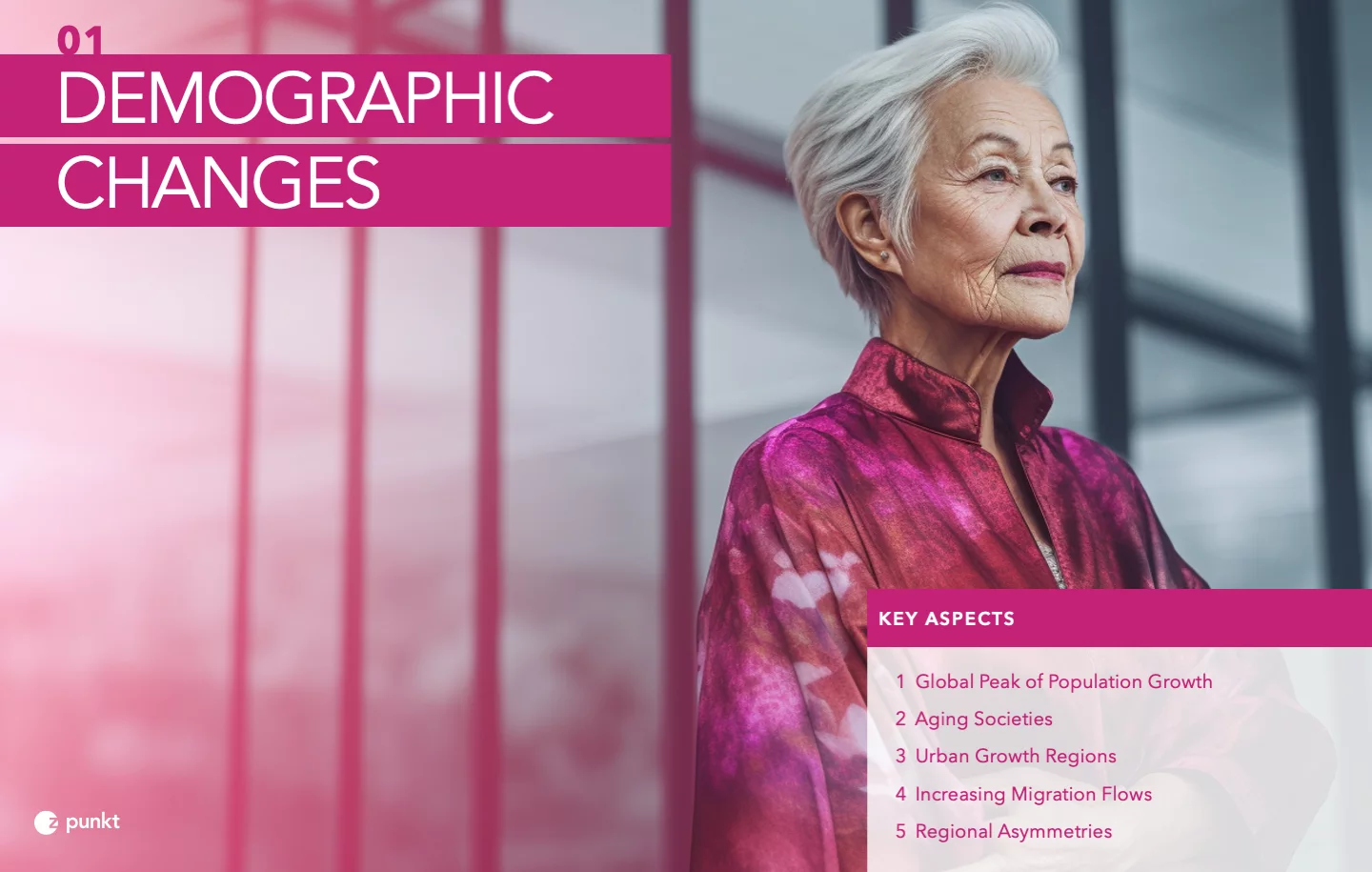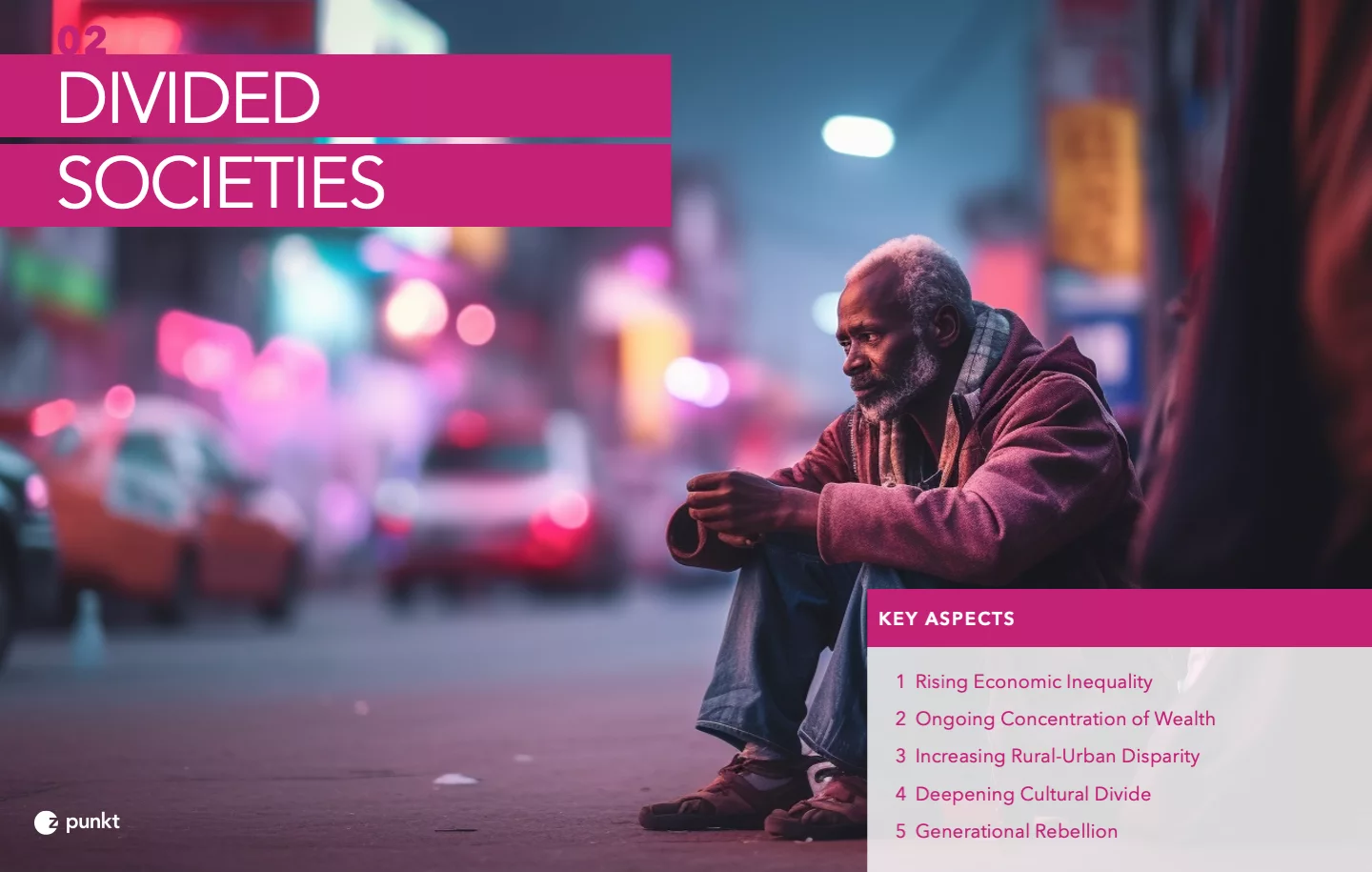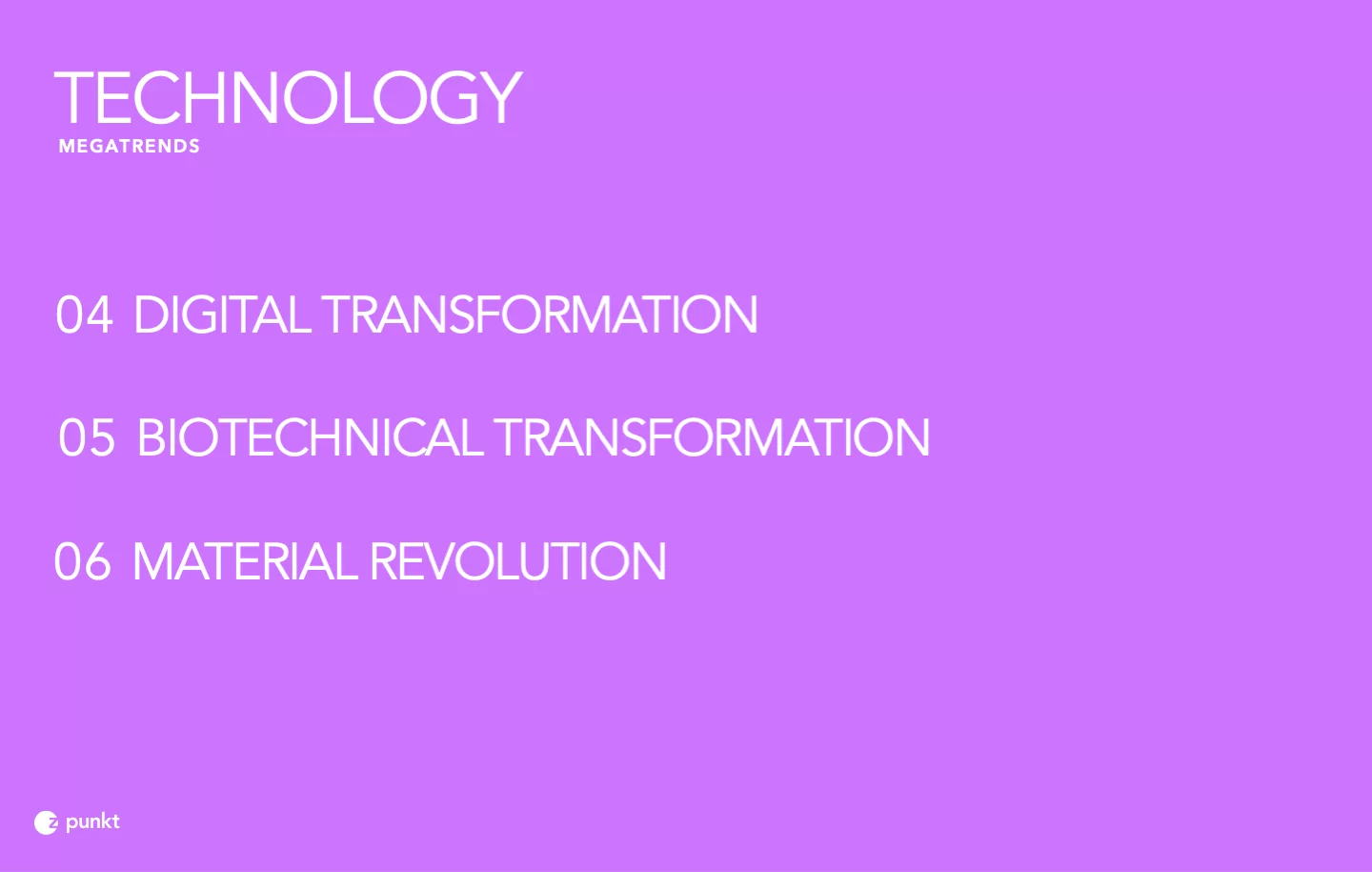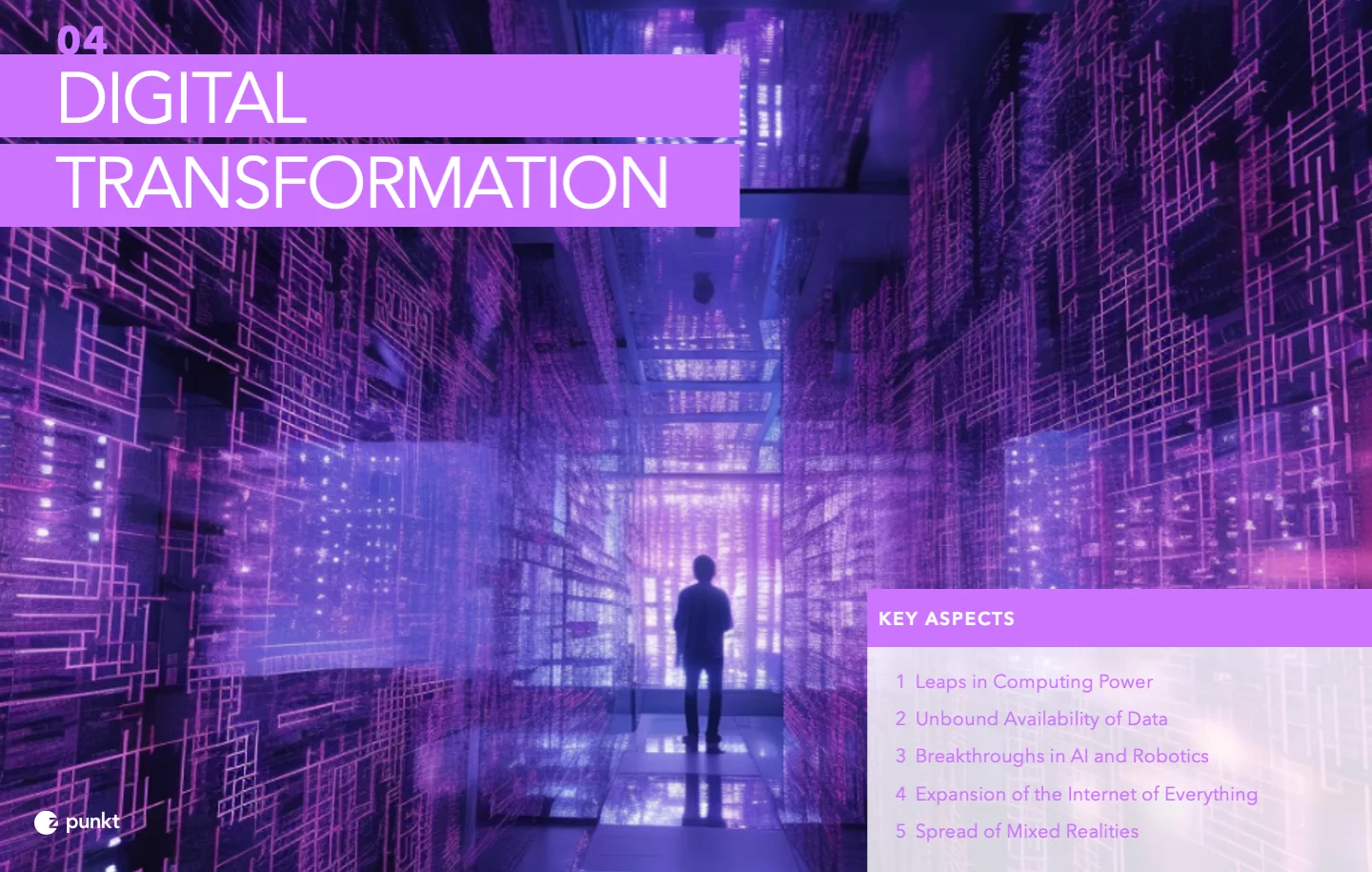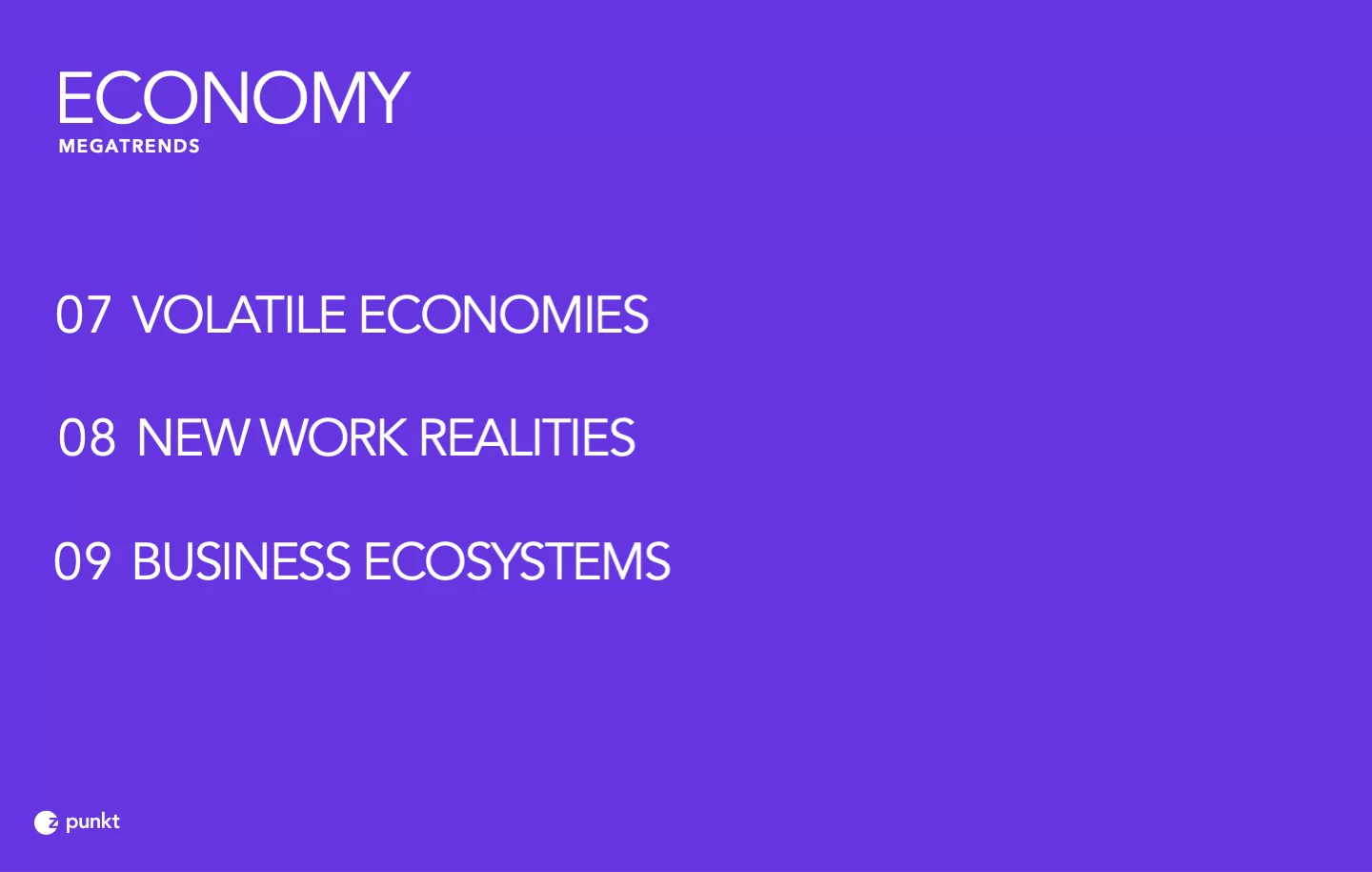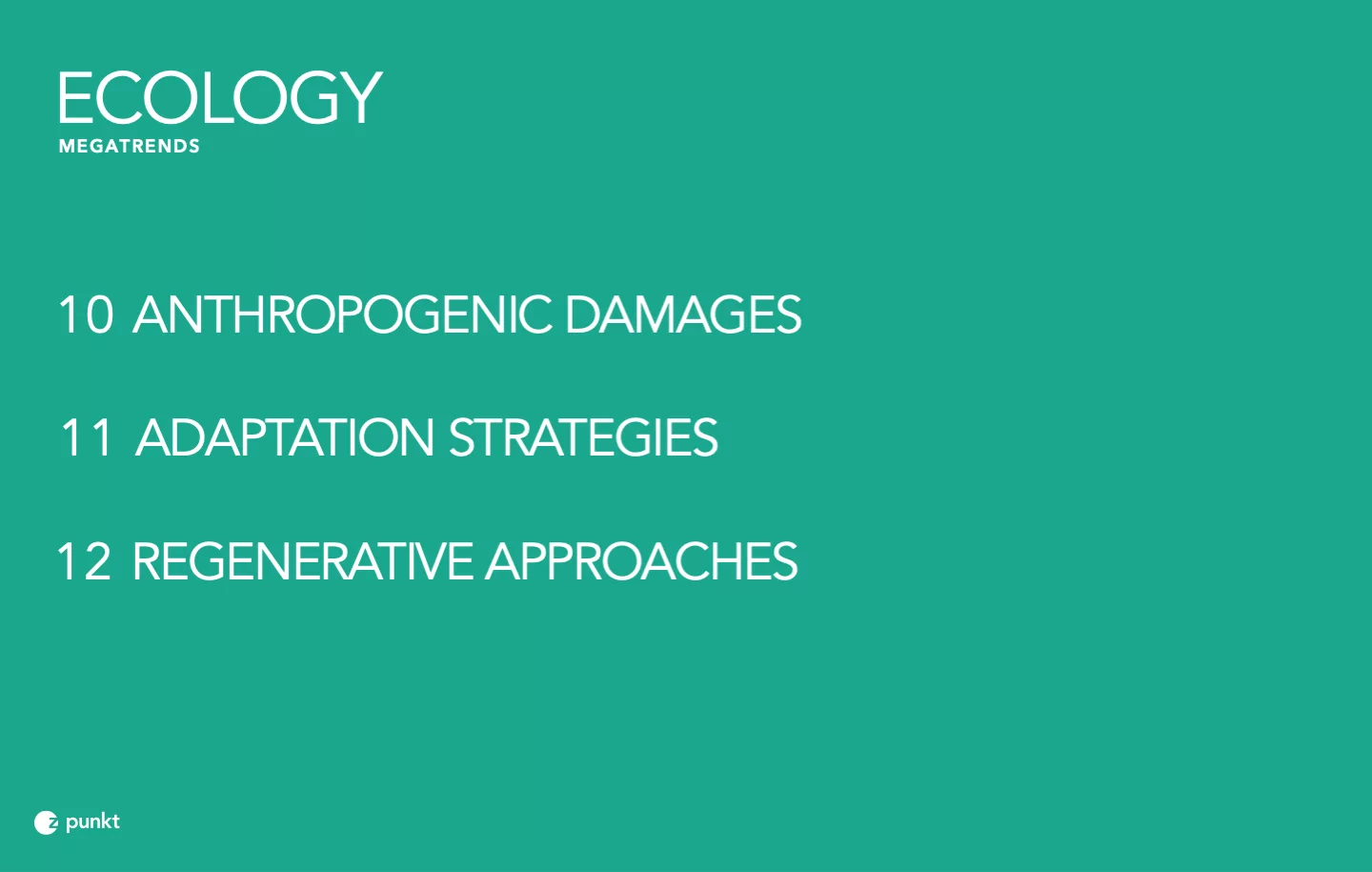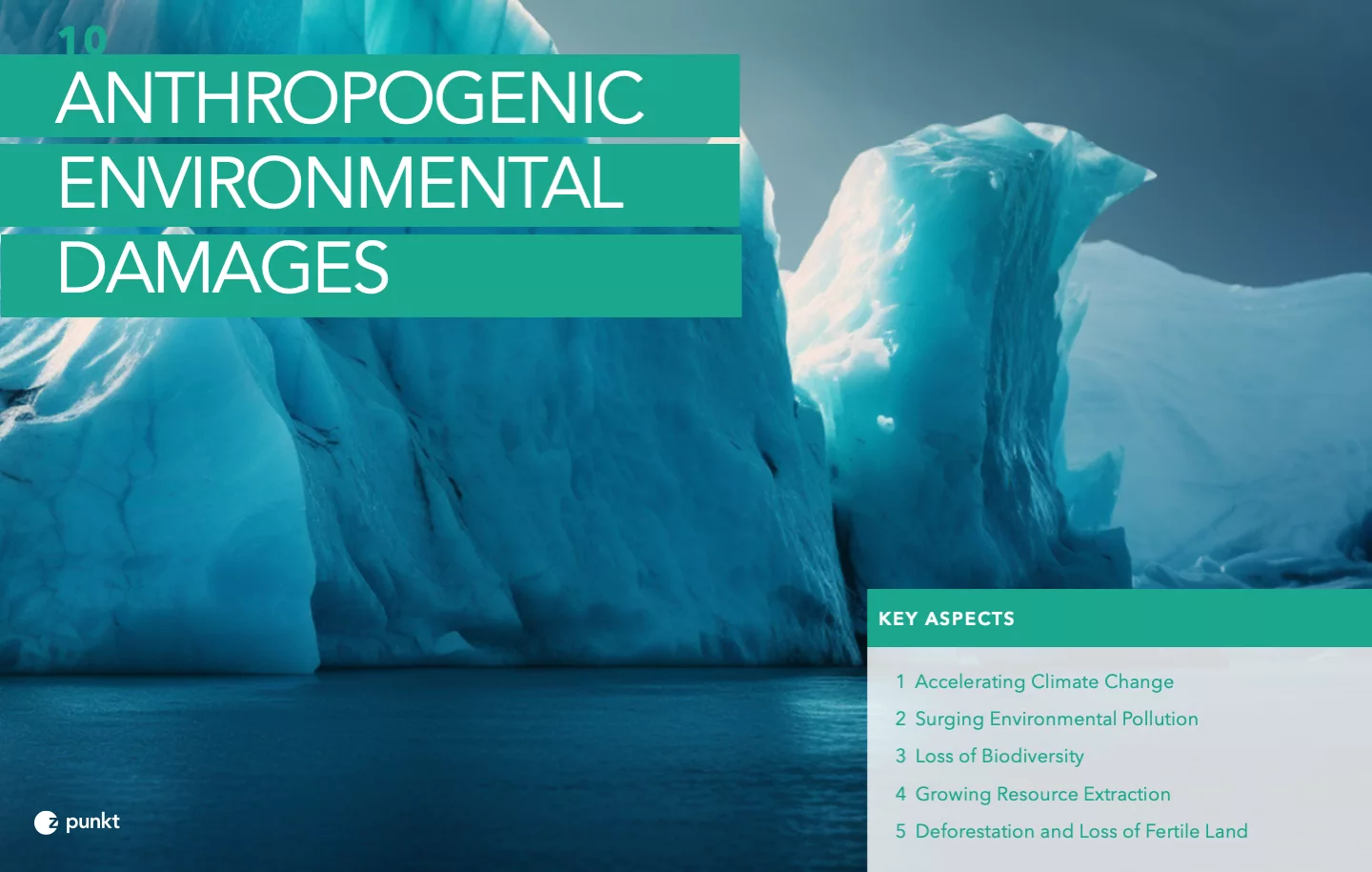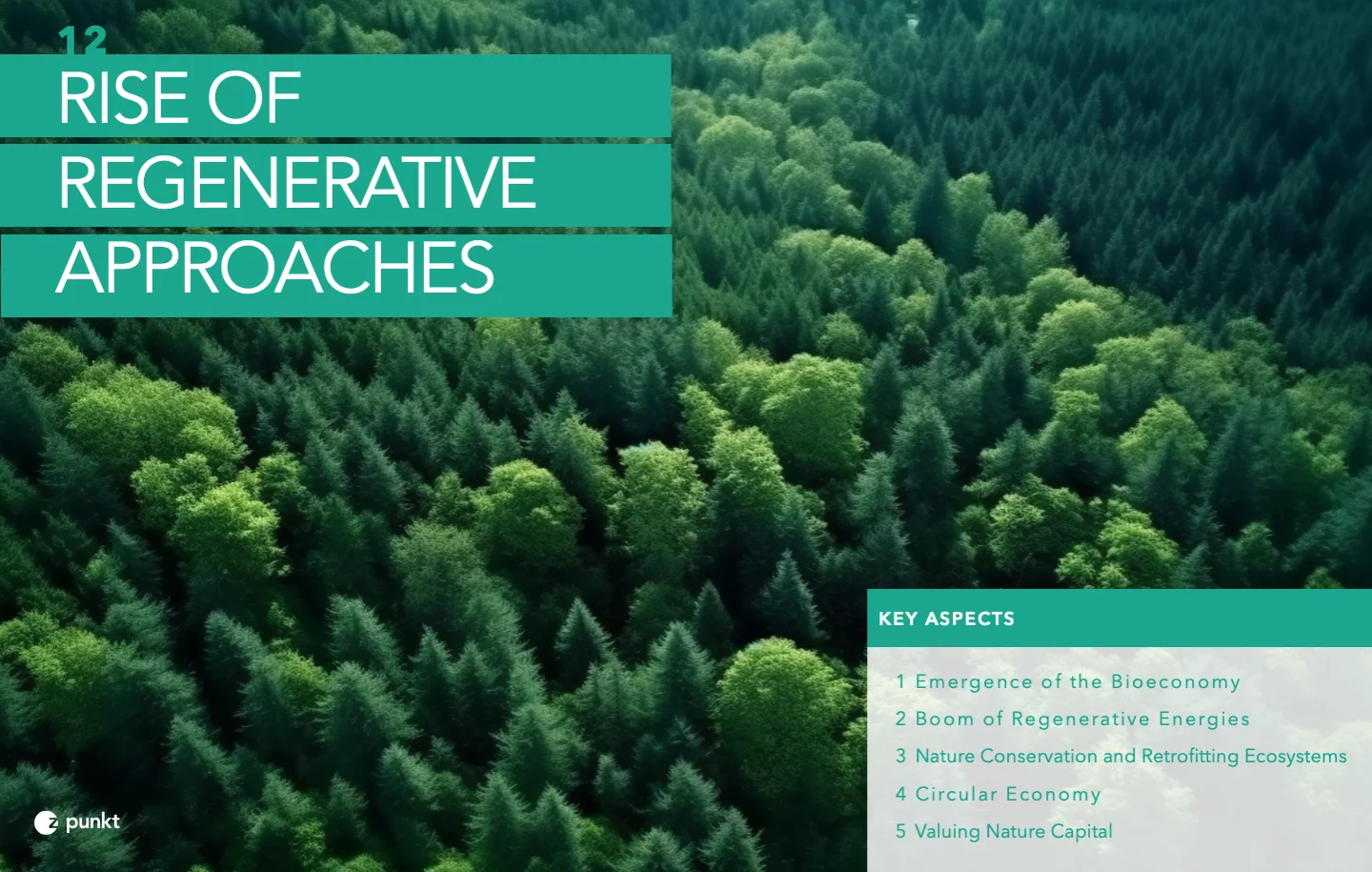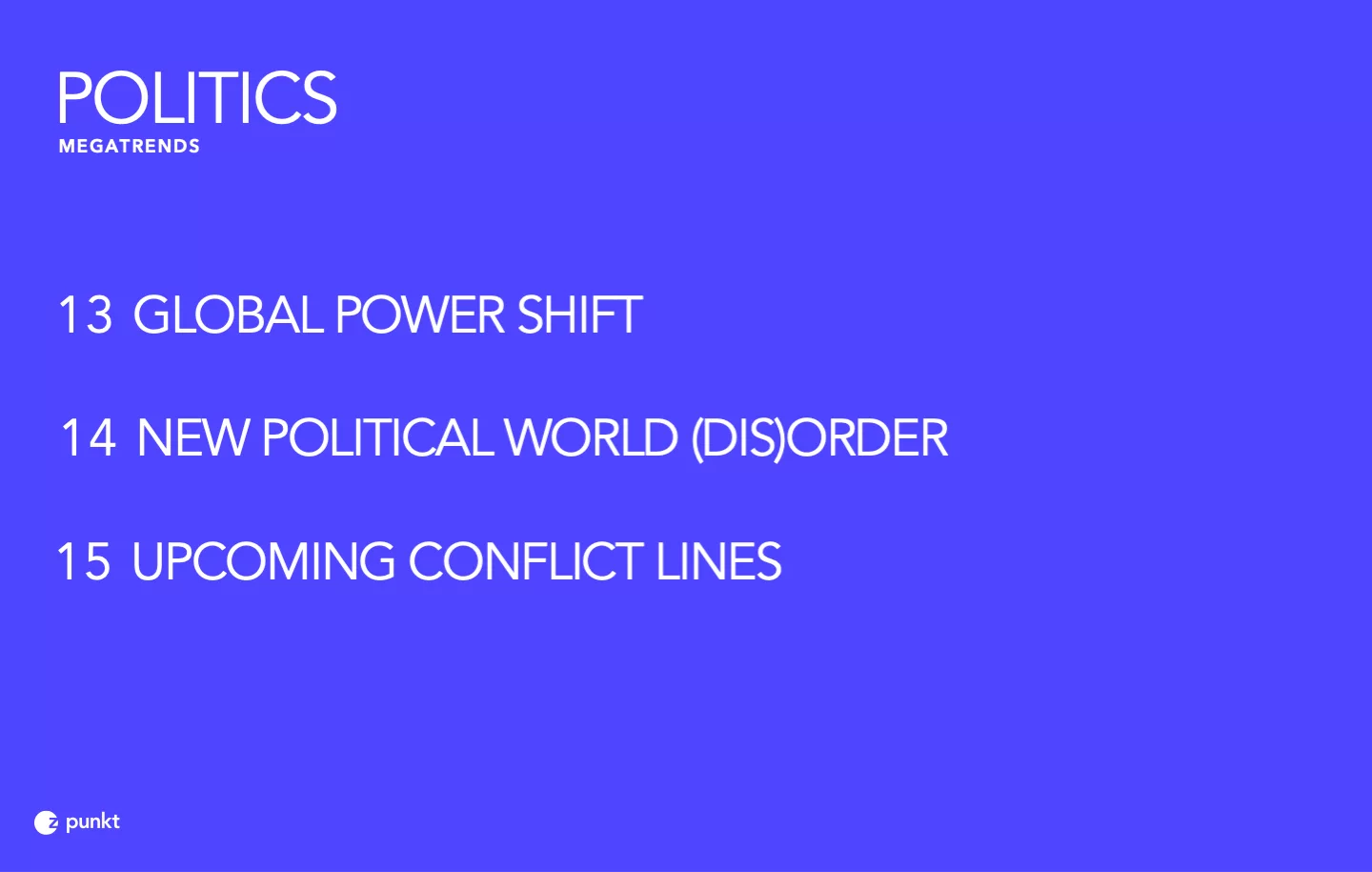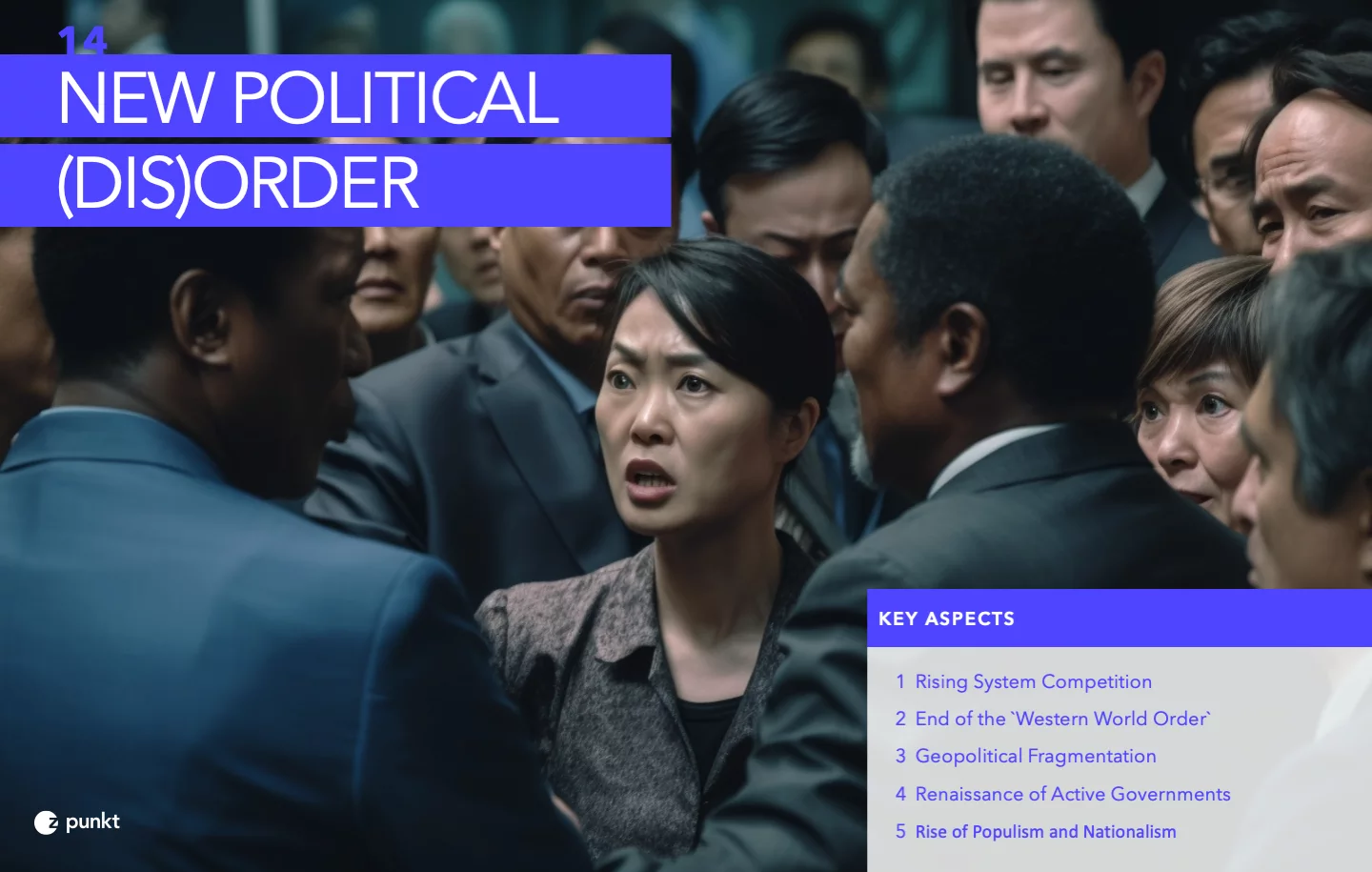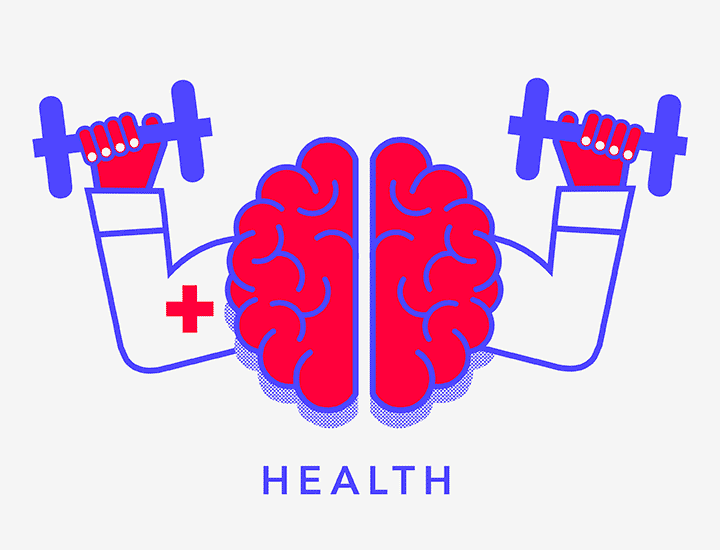Areas of need: Occupying and Shaping Future Markets
In terms of megatrends, our consultancy services are aimed at gaining an understanding of the long-term cause and effect relationships among the trends in question. This requires a sharp intellectual differentiation between the drivers of change (the megatrends) and their effects. For example, “mobility” is often referred to as a megatrend. However, mobility is actually a human need which is influenced by such megatrends as urbanisation, anthropogenic environmental damage and the digital transformation. The concomitant changes can initiate paradigm shifts within the markets associated with the areas of need in question. The transition from private car ownership to networked mobility services is a prime example of such a far-reaching change.
This example also demonstrates how areas of need also tend to be areas of value creation: it is in this context that future markets emerge which your company can occupy and shape. Z_punkt has developed a system for the classification of areas of need, on the basis of which it is possible to systematically identify relevant growth areas and future business opportunities in B2C and B2B contexts based on the specific skills profile of any given corporation. Below, we present a selection of examples, which, in addition to mobility, includes the fields of energy, health, nutrition, communication, housing, beauty, education and pleasure.



